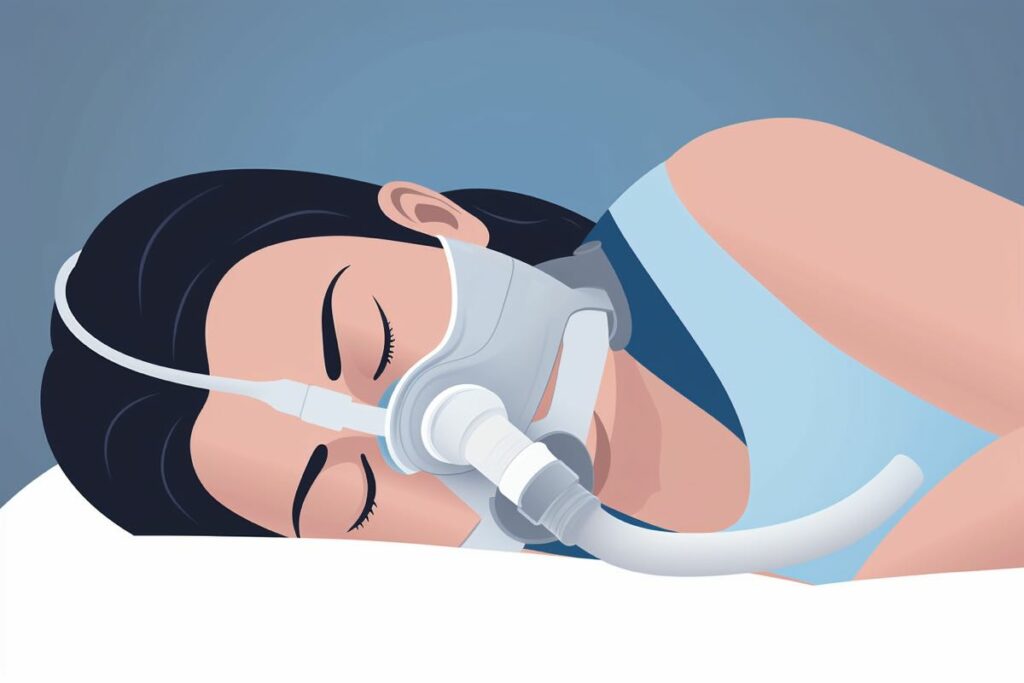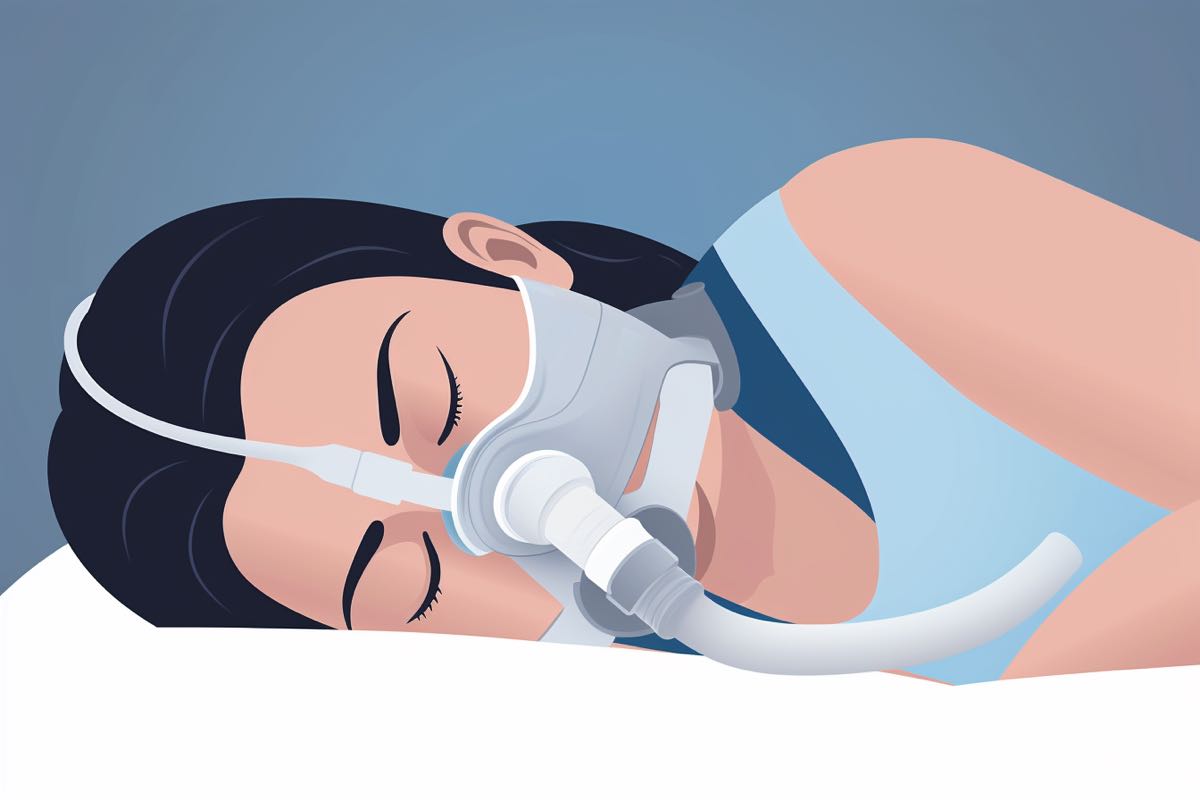As a sleep enthusiast, I’m always on the lookout for ways to improve my nightly rest and help others do the same. In my quest for better sleep, I’ve come across many people who struggle with various sleep disorders, including sleep apnea. This condition can be quite challenging to deal with, as it often affects your breathing patterns and overall quality of sleep.
One question that frequently comes up is whether sleeping face down might be a suitable option for those dealing with this disorder. Now, I’ve tried all sorts of sleeping positions over the years – side, back, even face down every now and then – so I know how crucial finding the right posture can be for a good night’s rest.

That’s why I decided to dive deeper into this topic and find out if sleeping face down could indeed work as a viable solution for individuals suffering from sleep apnea. In this article, we’ll explore the pros and cons of adopting such a position and discover some valuable insights to help you make an informed decision.
So let’s get started on our journey towards more peaceful slumber!
Understanding Sleep Apnea And Its Effects
Ah, sleep apnea – the notorious night thief that robs us of our restful slumber, leaving us gasping for air as we struggle to breathe.
Have you ever wondered what causes this dreadful disorder? Sleep apnea causes can vary, but in general, it stems from an obstruction in our airway. This disruption leads to difficulty breathing and snoring throughout the night, affecting not only our quality of sleep but also our overall health.
Fear not, fellow sleep enthusiasts! There are treatment options available to help combat this nocturnal nuisance. From lifestyle changes like losing weight or quitting smoking to medical interventions such as CPAP machines or dental devices – there’s hope for a better night’s rest.
But one question still lingers: is it okay for people with sleep apnea to sleep face down? The answer may surprise you.
The Pros Of Sleeping Face Down
Now, let’s talk about the pros of sleeping face down for people with sleep apnea.
One of the main face down benefits is that it can help open up your airways and reduce snoring. That’s right, folks – if you’re a snorer, you might find some relief by switching to this position!
Additionally, sleeping face down can alleviate pressure on certain parts of your body, such as your spine and neck.
With comfort considerations in mind, it’s essential to make sure you get the support you need when sleeping in this position. A proper pillow and mattress can make all the difference between a restful night’s sleep and one filled with discomfort or even pain.
So, if you’re thinking about giving face-down sleeping a try, be sure to invest in the right gear to maximize those sweet slumber benefits!
Potential Dangers Of Sleeping In This Position
Did you know that nearly 22 million Americans suffer from sleep apnea? With such a staggering number, it’s crucial to address the potential sleeping dangers and position risks associated with this condition.
Sleeping face down may seem like an appealing option for those with sleep apnea, but there are some hazards to consider. For starters, lying face down can increase the pressure on your chest and abdomen, making it even more challenging for your body to breathe efficiently. This added pressure could exacerbate your sleep apnea symptoms and lead to an uncomfortable night of tossing and turning.
Additionally, sleeping in this position can strain your neck and spine, leading to increased pain or discomfort upon waking up. So while it might be tempting to try something new in search of a better night’s rest, remember that the risks associated with sleeping face down may outweigh any potential benefits.
Alternative Sleeping Positions For Sleep Apnea Sufferers
As we’ve explored the potential dangers of sleeping face down, it’s important to consider alternative sleeping positions that can provide better comfort and support for people with sleep apnea. Thankfully, there are plenty of other options to choose from when looking for the perfect night’s rest.
- Side Sleeping: This position is highly recommended for sleep apnea sufferers as it helps keep the airways open and reduces the risk of throat muscle collapse.
- Elevated Head Position: Using pillows or other sleeping aids to elevate your head can help alleviate pressure on your airway and make breathing easier.
- Sleeping on Your Back with Legs Elevated: This position uses gravity to help align the spine and maintain an open airway, making it an excellent choice for those who struggle with sleep apnea.
- Positional Therapy Devices: There are a variety of positional therapy devices available on the market designed specifically to assist in maintaining a healthy sleeping position for those dealing with sleep apnea.
Experimenting with these alternative positions alongside any prescribed treatment can significantly improve your quality of sleep and overall health. Remember, finding the right position might take some time, so don’t be discouraged if you don’t see immediate results – perseverance is key!
Tips For Improving Sleep Quality With Sleep Apnea
Sleeping soundly seems like a simple luxury for those with sleep apnea, but it doesn’t have to be an elusive dream. To tackle this troublesome turmoil and achieve a peaceful slumber, you may need to take proactive steps and make adjustments to your daily habits.
One of the key factors in improving sleep quality for individuals with sleep apnea is practicing good sleep hygiene. This includes maintaining a consistent sleep schedule, creating a relaxing bedtime routine, and ensuring that your sleeping environment is comfortable and conducive to rest.
Another avenue worth exploring is seeking professional help for your sleep apnea struggles. There are various apnea treatments available that can significantly improve your quality of life and lead to more restful nights. For example, Continuous Positive Airway Pressure (CPAP) therapy is a common treatment that involves wearing a mask over the nose and/or mouth during sleep. The mask delivers pressurized air to help keep the airways open and alleviate the disruptions caused by sleep apnea.
Of course, consulting with your healthcare provider is crucial when considering any treatment plan or making changes in sleeping positions, such as sleeping face down. So don’t be shy – reach out for assistance and embrace the potential improvements awaiting you in your quest for healthier, happier slumbers!
Conclusion
In conclusion, sleeping face down might seem like the ultimate solution to a snoring symphony for sleep apnea sufferers. However, it’s crucial to weigh the pros and cons before diving headfirst into this position.
Remember, good quality sleep is worth its weight in gold, especially for those with sleep apnea.
Don’t hesitate to experiment with alternative positions and seek professional advice to achieve the blissful rest you deserve.
Sweet dreams!

